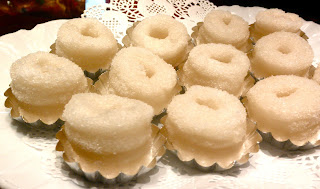Because I was a “guest” everywhere I went, we ate out often, to the point where I craved a simple home cooked meal, even though in a restaurant, whether critique or praise worthy, is my favorite place to be. I knew that China, if anything, would offer great food to keep me through the six long weeks, which felt like three months at least. It was frustrating not being able to upload pictures from slowly accumulated in my outdated camera to the computer (forgotten cable) and blog daily about the food (restricted site.) I guess mass blogging will have to do.
***
After making a pit stop in Shanghai, we took a seven-hour train to Nanchang, the still relatively underdeveloped city in which I grew up. Nanchang is a city in the Jiang Xi province that boasts famous dishes known throughout China. The city has a run-down vibe to it; the majority of its residents struggle to make livings through unstable family businesses and piles of trash rule street corners. But the city does have its positive aspects, such as the dazzling food found at one restaurant to which my great aunt invited over 50 of my close and distant relatives. My sister and I were lost among them, who shot rapid-fire Nanchang slang across the table and periodically broke out in fits of obnoxious laughter. But we focused on the food. Some highlights:
Ko Rou, which translates to "flipped meat", which is a heavy slice pork belly slice that’s boiled, shocked, dried, seared, cooled, slowly braised, sliced, then steamed skin side down under pungent fermented Chinese cabbage leaves called “mei gan cai”, then flipped onto a platter. This tedious cooking method results in luscious, perfect fat-to-lean-mean ratio slices that melds together perfectly with every bite. The fermented vegetables have a very sharp, tart flavor that balances the fatty meat well.

I would soon come to learn this but noodles made with rice flour is its own category and is "completely different" from noodles made with other types of starch. Rice noodles have a delicate but elastic texture are usually fried or sautéed. Although my mom has made fried rice noodles probably over a hundred times throughout the course of my short life, this batch, with pungent dried shitake mushrooms, pork strips, and mung bean sprouts, was the best I've ever tasted.
 Skinned eggplant that's been fried and topped in sesame and scallions, which came to our table sizzling in hoisin (seafood- based) sauce.
Skinned eggplant that's been fried and topped in sesame and scallions, which came to our table sizzling in hoisin (seafood- based) sauce. Puff pastry rolls with julienned daikon, leek, and pork topped with sweet and savory crumbs.
Puff pastry rolls with julienned daikon, leek, and pork topped with sweet and savory crumbs. 
